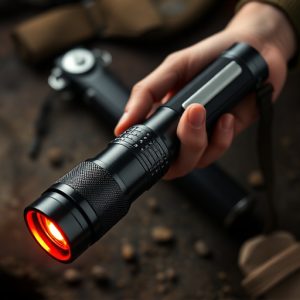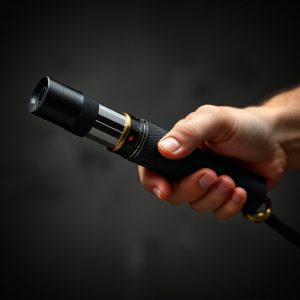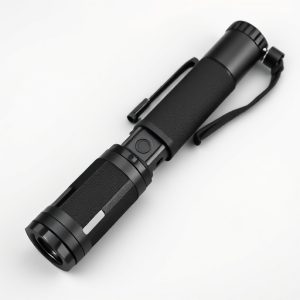Mastering Self-Defense with an Expandable Baton: Legal and Safety Essentials
An expandable baton is a compact yet effective self-defense tool for personal safety, designed for …….
An expandable baton is a compact yet effective self-defense tool for personal safety, designed for easy carry and compliance with legal requirements. It serves as a non-lethal alternative that can be quickly deployed to deter attacks without causing severe injury. However, its effectiveness relies on proper training and understanding of legal use to ensure responsible handling. Key features to consider when selecting an expandable baton include durability, a reliable locking mechanism, comfortable collapsed size for discreet transport, swift deployment under pressure, appropriate legal length, and a balance of weight for impact without impeding agility. Users must be knowledgeable about the laws governing the use, carry, and storage of such weapons in their jurisdiction within the United States, as these can vary significantly from state to state. It's imperative to train with the baton regularly, understanding its limitations and employing it only when necessary, after attempting de-escalation, and always proportionate to the threat faced. Regular maintenance and staying informed on legal matters are essential for lawful and ethical self-defense use of an expandable baton.
When it comes to personal safety, selecting a self-defense weapon that offers both effectiveness and legal compliance is paramount. Among the various options available, the expandable baton has emerged as a popular choice for its portability and striking power. This article delves into the critical aspects of owning and using an expandable baton for self-defense, from understanding its role to navigating legal considerations. We’ll explore key features that make it a reliable tool in self-defense scenarios, ensuring readers are well-equipped with knowledge to make informed decisions.
Understanding the Role of Self-Defense: The Case for an Expandable Baton
When considering non-lethal self-defense weapons, an expandable baton emerges as a viable option for personal security. Unlike fixed batons, their compact and retractable design offers convenience and portability, allowing individuals to carry them with ease while complying with many legal restrictions on longer batons. An expandable baton serves as an effective deterrent during encounters where verbal de-escalation fails and physical force is necessary to maintain one’s safety. Its rapid deployment, when extended to its full length, can incapacitate an attacker without causing permanent harm. Proper training in the use of these batons is essential to ensure they are used responsibly and effectively, as they can be a significant component in self-defense scenarios. The expandable nature of these batons also means they can be concealed, offering a discreet form of protection that is readily accessible when needed most. It’s important for potential users to understand the legal implications, proper handling techniques, and the situational appropriateness of deploying an expandable baton, ensuring it remains a tool for self-defense rather than a weapon for aggression.
Key Features and Considerations When Choosing an Expandable Baton for Personal Safety
When considering an expandable baton for personal safety, it’s crucial to evaluate several key features that distinguish a reliable self-defense tool from a mere novelty item. The durability of the material is paramount; look for batons made from high-strength aluminum or other sturdy metals, as these can withstand rigorous use and environmental conditions without bending or breaking. Additionally, the locking mechanism that prevents the baton from accidentally expanding or collapsing during normal carry or in a critical defense situation should be smooth yet secure. The size when collapsed must be manageable for your carry method—whether it’s in a purse, backpack, or pocket—while also being easy to deploy with one hand under pressure. The deployment speed of the baton is also an important consideration; some models extend with a simple twist or flip of the wrist, providing a swift response to threats. Furthermore, the length of the baton when fully extended should comply with local laws and be effective for self-defense. A common length range is between 14 to 26 inches, offering both portability and reach. It’s also advisable to choose a model that comes with a training video or manual, ensuring you can practice its use safely and effectively. Lastly, consider the weight—a lightweight design won’t hinder your agility but still offers substantial impact force when needed. By carefully assessing these features, you can select an expandable baton that serves as a formidable self-defense weapon for personal safety.
Legal Aspects and Best Practices for Safely Using an Expandable Baton in Self-Defense Situations
When considering a self-defense weapon, an expandable baton can be a practical choice for personal protection due to its compact size and ease of use. It is crucial to familiarize oneself with the legal framework governing the possession and use of such a weapon, as laws vary by jurisdiction. In the United States, for instance, the legality of an expandable baton often hinges on specific state or local regulations, which may dictate where and how you can carry and use it in self-defense situations. It is imperative to research and adhere to these laws to avoid legal repercussions.
Best practices for safely using an expandable baton include understanding its mechanics, maintaining it properly, and knowing the limitations of its effectiveness. Training is key; regular practice can enhance your proficiency with the baton and improve your reaction time in critical moments. Additionally, it’s important to use the weapon only when there is an imminent threat to your safety and when other options for de-escalation have been exhausted. Always ensure that your actions are proportional to the threat faced and that you aim to disarm your assailant rather than inflict unnecessary harm. Remember to keep the baton in a readily accessible place during situations where you may need it, but also be mindful of local laws regarding open or concealed carry. By following these guidelines and staying informed about the legal aspects surrounding self-defense expandable batons, individuals can better ensure their safety while respecting the rule of law.


